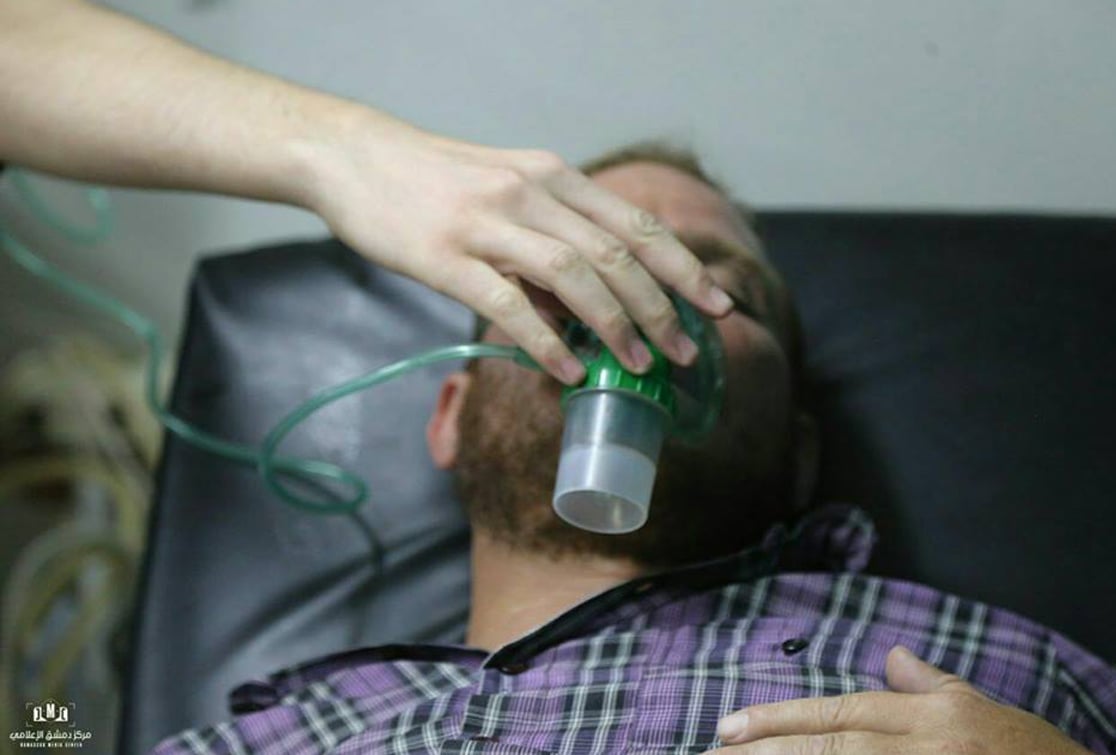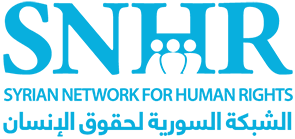All Attacks were in Damascus and Eastern Ghouta

SNHR has released its 27th report on the use of chemical weapons in Syria. The report documents five attacks after Khan Sheikhoun chemical attack, which all took place in Damascus and its suburbs.
The report notes that on June 29, 2017, the OPCW released its report on Khan Sheikhoun chemical attack which confirms that Sarin gas was used on April 4, 2017. However, the OPCW didn’t assign responsibility, as investigations regarding the identity of the perpetrator became part of the mandate of the Joint Investigative Mechanism which was established in accordance with Security Council Resolution 2235 that was adopted on August 7, 2015.
The report adds that even though the American administration bombed Shayrat Airbase – the military airbase from which the warplanes that targeted Khan Sheikhoun took off – the Syrian regime never stopped using chemical weapons in small-scale attacks that didn’t result in a great number of victims and injuries in a manner that would have embarrassed the decision-makers and compelled them to take action.
According to the report, no less than five chemical attacks were recorded after Khan Sheikhoun attack, which was on April 4, 2017, as most of those attacks involved the use of hand grenades that were loaded with a gas believed to chlorine in the context of military progress on battlefronts of which the Syrian regime seeks to take control from armed opposition factions.
Furthermore, the report says that 207 attacks at least were carried out between March 2011 and July 31, 2017, including 33 attacks before Security Council Resolution 2118 was adopted on September 27, 2013, while 174 attacks were carried after the same Resolution, including 105 attacks after Resolution 2209, adopted on March 6, 2015, and 49 attacks after Resolution 2235, adopted on August 7, 2017.
The report notes that these attacks resulted in the killing of no less than 1,420 individuals – 1356 civilians, including 186 children and 244 women (adult female), 57 armed opposition fighters, and seven captives from Syrian regime forces who were inside a prison for the opposition. Also, 6,672 at least were injured.
Fadel Abdul Ghany, chairman of SNHR, adds: “The Syrian regime has broken all the red lines and the warnings the current American administration has issued, and even in a worse manner in the time of the previous administration. In addition, the Syrian regime has ignored the French president’s warnings and breached all the Security Council Resolutions even though they refer to Chapter VII. Failing again to come up with a serious, deceive deterrent will undoubtedly lead to more disrespect and insolence.”
The report highlights the high-level methodology adopted in the report, which draws upon the ongoing monitoring through a wide network that have been built over an accumulation of extensive relations since the start of our work. However, the report notes that the researcher can’t access the incident location in many of the attacks in light of the incredibly high security risks, and given the frequency of daily incidents and the human and material resources. In such cases, the course of action is to rely on accounts from survivors who experienced the violation firsthand, where we try to access those directly, and, to a second degree, who saw or filmed the violation. Thirdly, we try to speak to medical personnel who treated the wounded, and then assess the symptoms. The report adds that the available data in open sources such as the internet and media outlets are also analyzed, in addition to researching and working on identifying the specifics of the geographical site, temperature, and the speed and direction of the wind, at the time of the incident.
The report outlines four chemical attacks on the battlefronts of Joubar neighborhood and Zamalka and Ein Tarma towns between mid-June 2017 -the period of time when the Syrian regime forces started their military escalation in Damascus and Eastern Ghouta- and July 31, 2017. These attacks injured 27 individuals who were mostly armed opposition fighters.
The report draws upon six accounts that were collected by talking directly to eyewitnesses, and not from open sources, in addition to analyzing videos that were broadcasted by activists not too long after the attack which showed wounded exhibiting symptoms such as suffocation, breathing difficulties, blurry vision, and muscle weakness. Other pictures showed other symptoms such as pupil constriction and burning redness in the eyes. The severity of the symptoms depended on the degree to which the victim was exposed to the chemical substance.
The report stresses that all the information collected suggests a potential use of poison chemical substances, which means that the Syrian regime has violated the international humanitarian law through the deliberate and repeated use of chemical weapons, which constitutes a war crime. Moreover, the use of chlorine gas is a violation to Security Council Resolutions 2118, 2209, and 2235, and to the agreement signed by the Syrian government on September 14, 2013, which provides for the prohibition and destruction of poison gases. The report calls on the state parties to the agreement to find ways to deter the Syrian regime from its repeated violation to the agreement, as the crime of murder qualify as a crime against humanity according to Article 7 of the International Criminal Court’s Rome Statute, considering that these attacks have been systematic as well as widespread since March 2011.
The report stresses that the Russian government has to stop using veto for the sake of protecting the Syrian regime who is involved in perpetrating crimes against humanity and war crimes, and using chemical weapons. Also, the report calls on the Russian government to stop preventing the referral of the case in Syria to the International Criminal Court.
The report calls on the European Union and the United States of America to Support the International, Impartial, and Independent Mechanism that was established in accordance with the United Nations General Assembly Resolution 71/248, which was adopted on December 21, 2016, and activate the courts that enjoy a universal jurisdiction, and work on prosecuting one of the most dangerous war crimes this age has seen: the use of chemical weapons.
The report calls on the Commission of Inquiry to start investigating the incidents included in this report and the ones that were documented previously.
The report notes that Human Rights Council have to shed more light on the Syrian regime’s breaches of Security Council Resolutions.
Finally, the report stresses that the Friends of Syria Group have to provide the areas that might be targeted with poison gases (in light of the Security Council’s inability to end these attacks) with protection masks- SNHR estimates that 20,000 masks at least are needed in these areas- in addition to the necessary equipment for the removal of the effects of the chemical contamination


